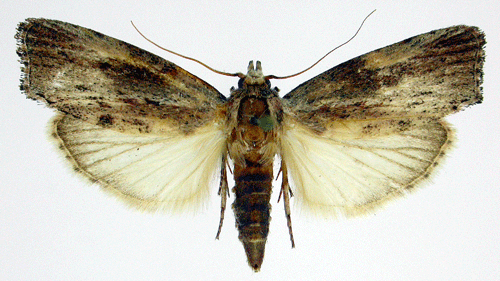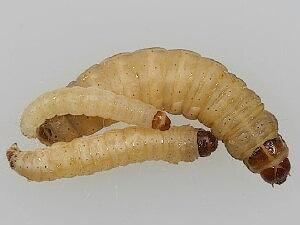Kingdom Animalia Order Lepidoptera Subfamily Galleriinae Scientific name Galleria mellonella Rank Species | Phylum Arthropoda Family Pyralidae Tribe Galleriini Higher classification Galleria | |
 | ||
Similar Lesser wax moth, Insect, Heterorhabditis, Butterflies and moths, Steinernema | ||
Galleria mellonella
The greater wax moth or honeycomb moth (Galleria mellonella) is a moth of the family Pyralidae. It is the only member of the genus Galleria. It is found in most of the world, including Europe and adjacent Eurasia, its presumed native range, and as an introduced species on other continents, including North America and Australia.
Contents
- Galleria mellonella
- Waxworm galleria mellonella macro shaking camera and autofocus sorry
- Description ecology and use by humans
- In research
- Synonyms
- References

Its close relative, the lesser wax moth (Achroia grisella), is also a member of tribe Galleriini of the pyralid subfamily Galleriinae. The greater wax moth is the type species of this tribe and subfamily.

Waxworm galleria mellonella macro shaking camera and autofocus sorry
Description, ecology and use by humans

The adults' wingspan is 30–41 mm. This moth flies from May to October in the temperate parts of its range, such as Belgium and the Netherlands.

The caterpillar larvae, or waxworms, feed on the honeycomb inside bee nests and may become pests of apiculture. Less often, they are found in bumblebee and wasp nests, or feeding on dried figs. The larvae are commercially available. They can be used as food for the rearing of captive animals in terraria, such as geckos or predatory insects.

Vairimorpha ephestiae is a fungal parasite of the wax moth. Pseudomonas aeruginosa is also pathogenic to G. mellonella. The associations of virulence factors are the same for plant and animal infections.
When fried in oil, the larvae explode and take on a shape resembling popcorn.
In research
The waxworms of the greater wax moth have been shown to be an excellent model organism for in vivo toxicology and pathogenicity testing, replacing the use of small mammals in such experiments. The larvae are also well-suited models for studying the innate immune system. In genetics, they can be used to study inherited sterility. NOTE: cellular and humoral immunity are part of acquired immunity, which is only in vertebrates. Insects only have innate immunity.
Experiments with infected waxworms support the hypothesis that the bacterial stilbenoid 3,5-dihydroxy-4-isopropyl-trans-stilbene has antibiotic properties that help minimize competition from other microorganisms and prevents the putrefaction of the insect cadaver infected by the entomophagic nematode Heterorhabditis, itself host for the Photorhabdus bacterium.
G. mellonella is reported to be capable of hearing ultrasonic frequencies approaching 300 kHz, possibly the highest frequency sensitivity of any animal.
Synonyms
As a widespread and somewhat notorious species, the greater wax moth has been described under a number of now-invalid junior synonyms:
Junior synonyms (and otherwise invalid names) of the genus Galleria are:
